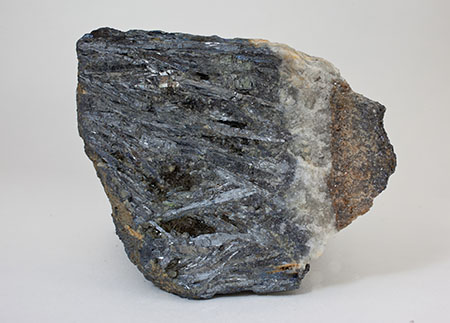Antimony - International Antimony Association (original) (raw)
Antimony resides on the table of elements identified by atomic number 51 and symbol Sb (stibium) alongside lead (Pb), tin (Sn) and bismuth (Bi). It is mainly sourced in China in its sulfide mineral stibnite form. As a metalloid, it has a combination of metal and non-metal properties, which makes it a very versatile element. The oldest recorded use of Antimony is as kohl (cosmetic) during biblical times, in ancient Egypt and Southern Asia. Since then, many more forms and uses of Antimony have been developed and identified.
Technical resource
i2a represents producers, importers and distributors of 10 Antimony (Antimony) substances:
- Antimony Metal, mainly used as an alloying component in lead (Pb) applications, including Pb-acid batteries
- Diantimony Trioxide, mainly used as a synergist for halogenated flame retardants and the catalysis of PET resin
- Diantimony Trisulfide, mainly used in brake pads and as primer in ammunitions
- Diantimony Tris(ethylene glycolate), mainly used in the catalysis of polyethylene terephthalate (PET) resin
- Antimony Trichloride, mainly an intermediate in the production of other Antimony substances
- Diantimony Pentoxide, mainly used as a synergist for halogenated flame retardants
- Sodium Antimonate (A), mainly used in the production of high-technology glass
- Antimony Pentachloride, mainly used in the catalysis of polytetrafluoroethylene (PTFE)
- Sodium Hexahydroxoantimonate, mainly used in the production of high-technology glass
- Potassium Hexahydroxoantimonate, mainly used in fireworks
Societal Value
World Antimony resources were estimated at 5 million tons in 2011 by Bio Intelligence Service (2015). According to USGS in 2016 the world Antimony reserves amounted to 2 million tons, 80% of which is concentrated in three countries: China, Russia, and Bolivia (USGS, 2016).
The annual globally mined production of Antimony is approximately 175,500 tons (BGS, 2015), most of which is extracted in China. Antimony is furthermore a co- or by-product of the production of gold, lead, copper, and zinc.
Figure 1 provides an overview of the main uses of Antimony. In all applications, only relatively small quantities of Antimony are needed to achieve the required function. Even in such small quantities, Antimony enables the availability and performance of significant quantities of articles which are indispensable to society:
- Flame retardant textiles and plastics (43 million tons in 2015 (PlasticsEurope, 2016) which are crucial in saving the lives of millions of people
- PET resin used to produce PET bottles and many more lightweight recyclable food packaging materials helping to maintain the original properties of their contents (27.8 million tons in 2015 (PlasticsInsights, 2016)
- Polyester textiles used in fashion, domestic, automotive, IT hardware, and industrial applications
- Lead-based batteries which remain the most cost-efficient rechargeable batteries (demand of 478 million KVAh in 2014 – PR Newswire, 2016)
- Lead-based alloys, which enable cost-efficient solutions for construction, ammunitions, weights, solders, pewters, fusible alloys, and radiation shields
- High purity and transmission flat glass (global photovoltaic glass consumption reached 580 million m² in 2015 – Globe Newswire, 2017) which promotes increased sustainability in both energy production and consumption solutions
… to name just a few.

Figure 1: Global consumption / end uses of Sb (Source: Roskill, 2014)